Charles Dickens, arguably one of the greatest novelists of the Victorian era, painted vivid pictures of 19th-century London society with his words. His stories, rich with intricate characters and poignant social commentary, have captivated readers for generations.
From the heart-rending tales of orphans to biting satires of the societal elite, Dickens’s novels offer a comprehensive glimpse into the complexities of human nature and the social fabric of his time. As we take a dive into the ocean of his works, it’s helpful to navigate with an ordered list of his novels.
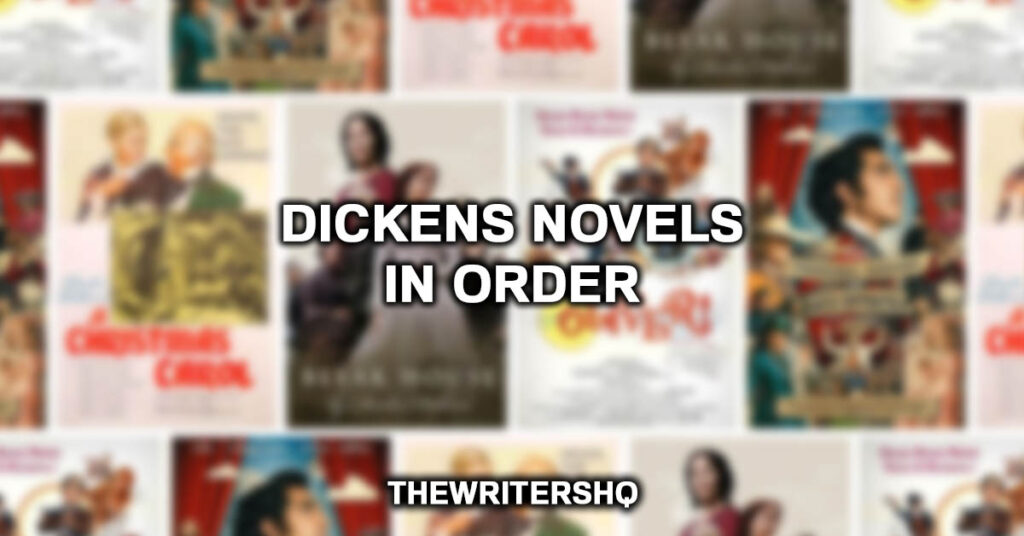
The Order of Charles Dickens’s Novels:
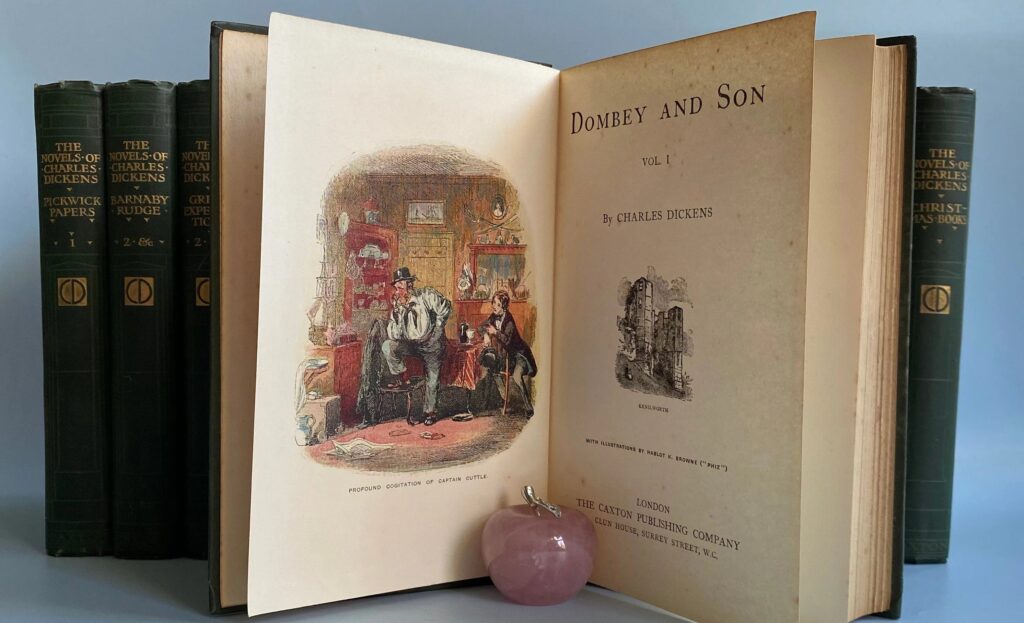
- The Pickwick Papers (1836)
- Oliver Twist (1837-1839)
- Nicholas Nickleby (1838-1839)
- The Old Curiosity Shop (1840-1841)
- Barnaby Rudge (1841)
- Martin Chuzzlewit (1843-1844)
- Dombey and Son (1846-1848)
- David Copperfield (1849-1850)
- Bleak House (1852-1853)
- Hard Times (1854)
- Little Dorrit (1855-1857)
- A Tale of Two Cities (1859)
- Great Expectations (1860-1861)
- Our Mutual Friend (1864-1865)
- The Mystery of Edwin Drood (1870, unfinished due to Dickens’s death)
As you venture into each novel, prepare to be transported to a different world, with its unique characters and settings, yet all united by Dickens’s keen eye for detail and his unrivaled storytelling prowess. Enjoy the journey!
What is the best Charles Dickens novel to read first?
Oliver Twist is a great place to begin. Relatively shorter than some of his other mammoth works, this novel offers a gripping story of an orphan boy navigating the cruel streets of London. It provides the quintessential Dickens experience with memorable characters, vivid settings, and social commentary.
Expert Tip: Another good starting point is A Christmas Carol, a novella that captures Dickens’s style and themes in a shorter, poignant tale.
What is Charles Dickens’s least famous book?
While “least famous” can be subjective, one of Dickens’s lesser-known novels is Barnaby Rudge. It’s one of his historical novels, set during the anti-Catholic Gordon Riots of 1780. Although still brilliant in its own right, it doesn’t receive as much attention as some of his other works.
What is the most famous book Charles Dickens wrote?
This is a difficult choice as Dickens penned several immensely popular works. However, if one were to pinpoint a single most famous work, A Tale of Two Cities would likely be it, especially with its iconic opening line, “It was the best of times, it was the worst of times…” Other strong contenders for this title include Great Expectations and Oliver Twist.
Regardless of where you begin or which novel you consider his magnum opus, the world of Charles Dickens is vast, rich, and worthy of exploration. Each novel offers a unique journey, showcasing his ability to chronicle humanity in all its shades.
Here’s a summary of the books:
1. The Pickwick Papers (1836)
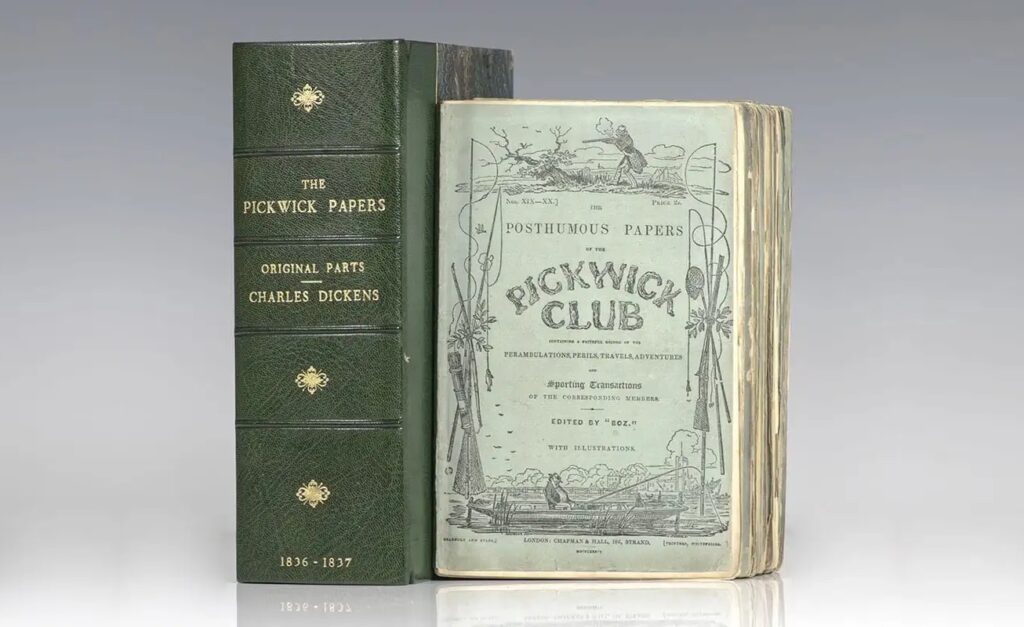
Originally titled The Posthumous Papers of the Pickwick Club, this was Dickens’s first novel. The narrative follows the adventures and mishaps of Mr. Samuel Pickwick and the members of the Pickwick Club.
Originally intended as mere humorous sketches accompanying illustrations, Dickens’s rich characters and tales quickly took center stage. The novel travels through various episodes, from comic to tragic, as Mr. Pickwick, his friend Nathaniel Winkle, Augustus Snodgrass, and Tracy Tupman embark on their journeys.
One of the notable characters introduced in this work is Sam Weller, Mr. Pickwick’s witty and loyal servant.
2. Oliver Twist (1837-1839)
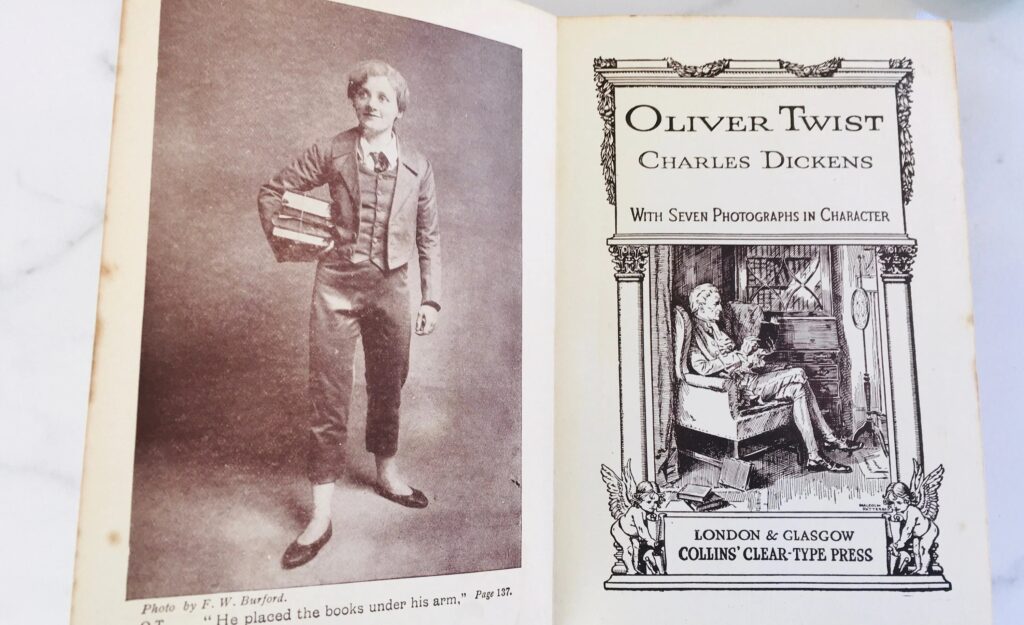
This is the dark and poignant tale of Oliver, an orphan who runs away from a workhouse and meets a group of juvenile criminals in London. It delves deep into the seedy underbelly of the London streets, depicting crime, poverty, and injustice.
Characters like Fagin, the Artful Dodger, and Bill Sikes have become synonymous with Dickens’s portrayal of the darker aspects of society. The novel critiques the harsh treatment of the poor in 19th-century England and the shortcomings of the Poor Law system.
3. Nicholas Nickleby (1838-1839)
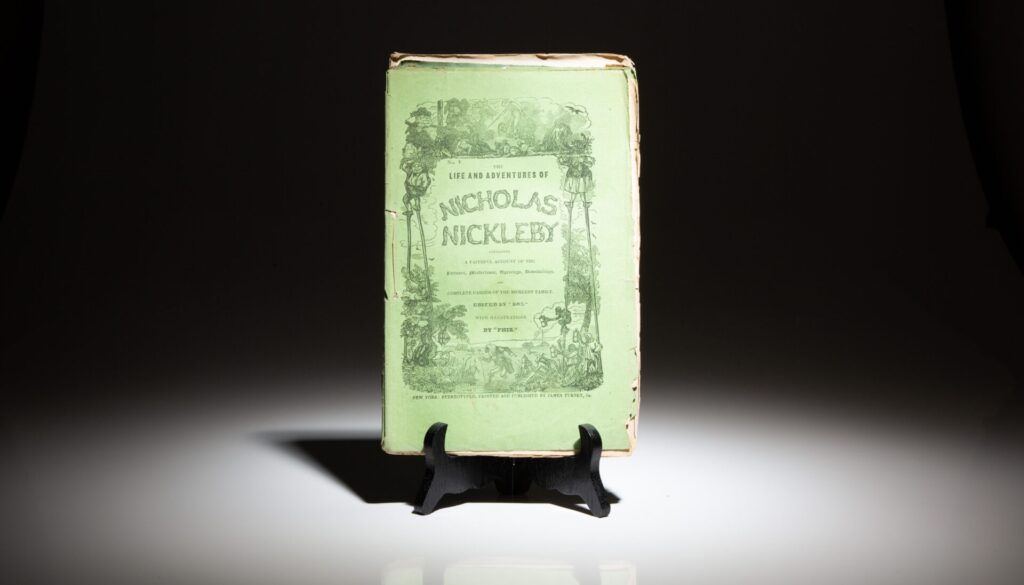
After the death of his father, young Nicholas Nickleby, along with his mother and sister, is forced to seek help from his estranged uncle Ralph. However, Ralph is a cold-hearted, scheming man who exploits them. Nicholas is sent to work at the horrific Dotheboys Hall school, run by the sadistic Wackford Squeers.
The novel traces Nicholas’s adventures as he escapes the school, joins a theater troupe, and ultimately confronts his uncle. Through various subplots and an ensemble cast, Dickens exposes social injustices, particularly the dreadful conditions of Yorkshire schools.
4. The Old Curiosity Shop (1840-1841)
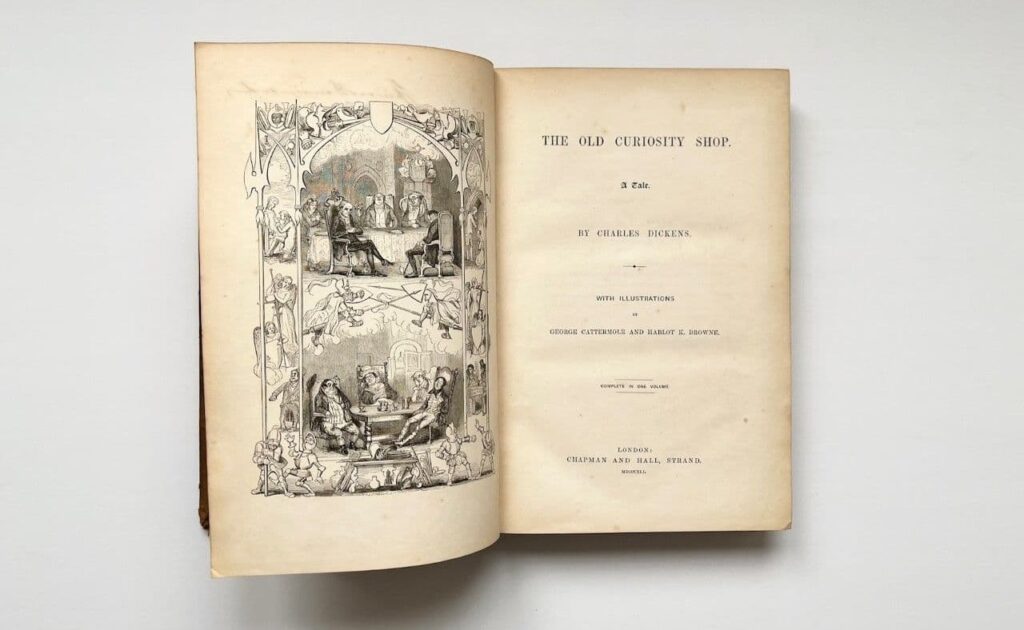
The story revolves around the life of Little Nell and her grandfather, who lives in the eponymous shop. When the grandfather loses all his money in an ill-advised attempt to provide for Nell’s future, they are forced to leave their home and wander the countryside. They encounter various characters, some kind and others malevolent.
All the while, they’re pursued by the grotesque and obsessed moneylender, Quilp. The novel is renowned for its portrayal of Nell’s pure innocence in contrast to the surrounding decay and corruption.
5. Barnaby Rudge (1841)
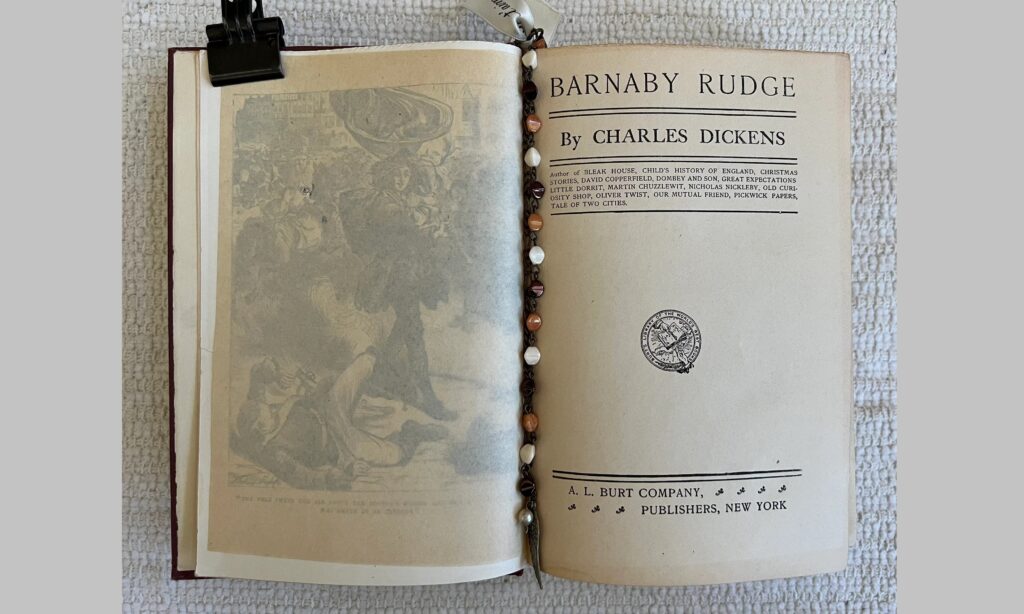
Set during the anti-Catholic Gordon Riots of 1780, this historical novel is both a romance and a social protest. At its center is Barnaby Rudge, a kind-hearted but simple young man, and his pet raven.
The plot weaves together various characters’ stories, such as the locksmith Gabriel Varden, his daughter Dolly, and his apprentice (and Dolly’s suitor) Joe Willet. As tensions mount in London over anti-Catholic sentiment, personal and political conflicts intertwine, leading to chaos and tragedy.
6. Martin Chuzzlewit (1843-1844)
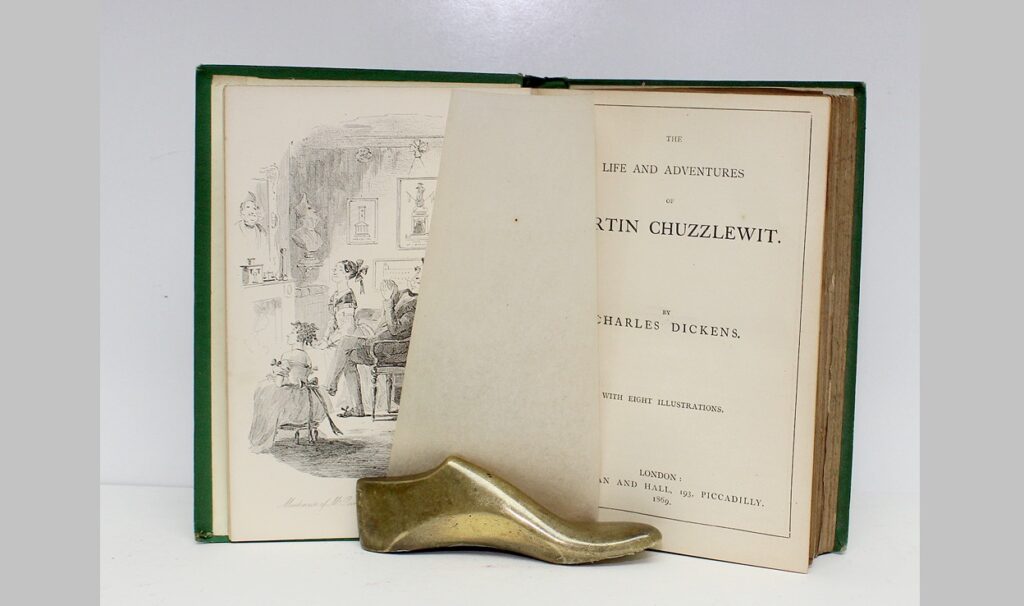
The story focuses on the Chuzzlewit family, particularly old Martin Chuzzlewit and his namesake grandson. The novel satirizes the selfishness exhibited by many of its characters. After a falling out with his grandfather, young Martin travels to America with his friend Mark Tapley.
Their experiences in the U.S. particularly in the malaria-ridden land of Eden are a critique of American society and ideals. Meanwhile, in England, the cunning and villainous Seth Pecksniff tries to manipulate his way into the elder Chuzzlewit’s wealth. Themes of hypocrisy, greed, and redemption run throughout.
7. Dombey and Son (1846-1848)
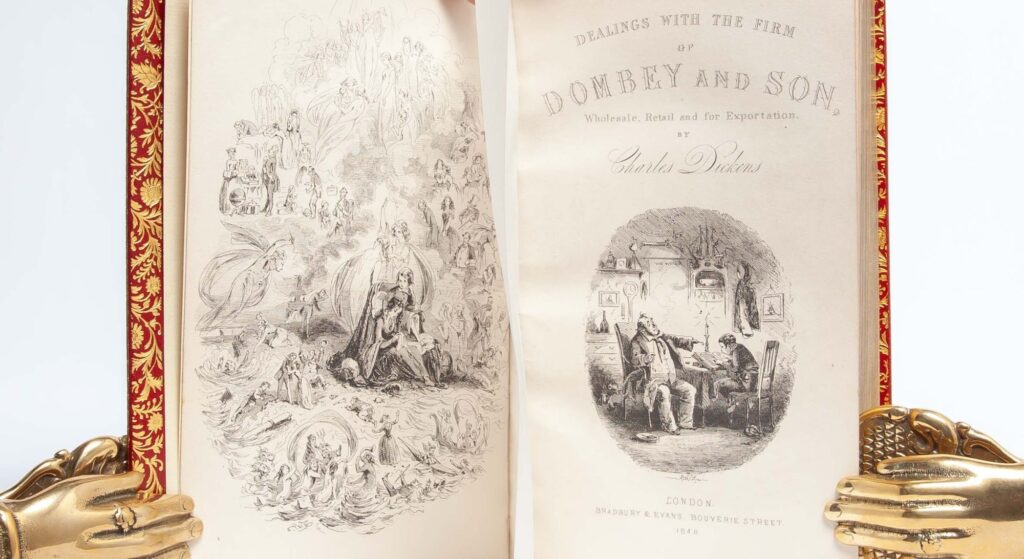
At its core, this novel deals with the theme of pride and explores the dynamics of family relationships. Mr. Paul Dombey is a wealthy merchant obsessed with having a male heir to continue his business. He largely neglects his daughter, Florence, focusing his affection on his son, Paul. However, when young Paul dies, Dombey’s world unravels.
As Dombey’s business and personal life spiral out of control, it’s Florence’s unwavering love that offers a chance at redemption. The novel provides a critical look at the mid-Victorian mercantile class and the effect of industrialization on personal values.
8. David Copperfield (1849-1850)
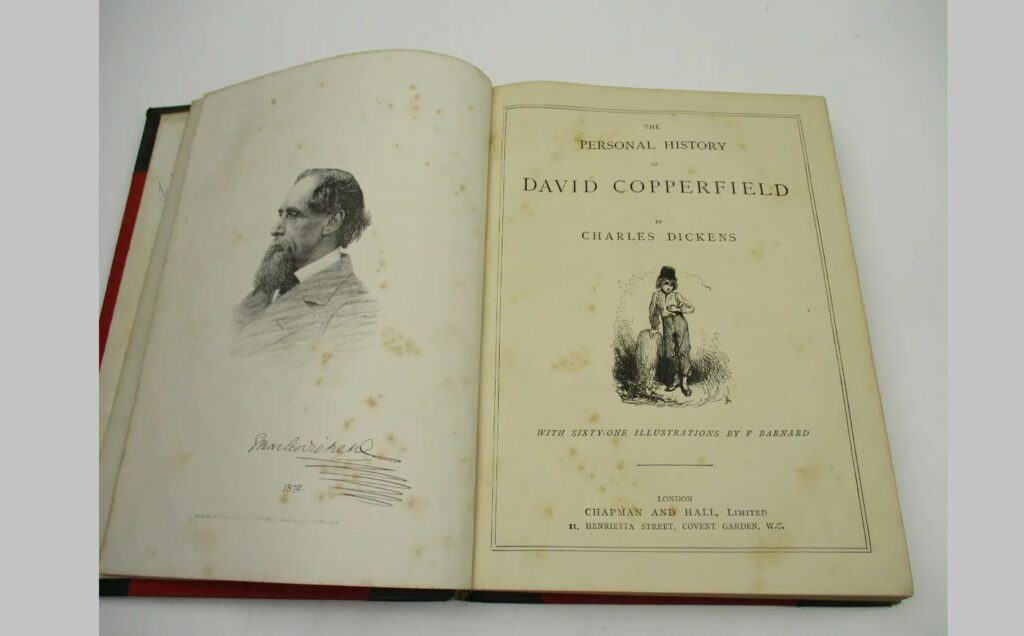
Often considered Dickens’s most autobiographical work, the novel traces the life of David Copperfield from his birth to middle age. We follow David’s journey from his idyllic early years with his mother, through hardships like being sent to a factory after his mother’s death, to his quest for success and happiness as an adult.
Throughout, David encounters a series of memorable characters, from the ever-optimistic Mr. Micawber to the treacherous Uriah Heep. The novel delves deep into themes of family, love, and perseverance.
9. Bleak House (1852-1853)
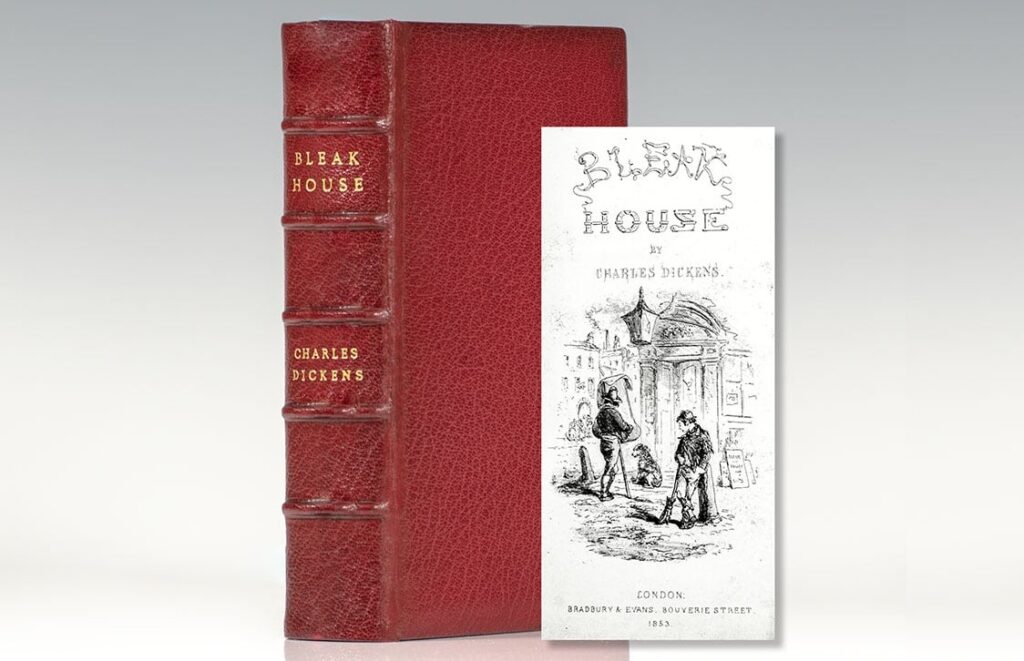
The novel is particularly known for its critique of the English judicial system, symbolized by the never-ending case of Jarndyce vs. Jarndyce in the Court of Chancery. The story is told through two narrators: the omniscient narrator and Esther Summerson, a key character. Esther, along with Ada Clare and Richard Carstone, are wards of court in the Jarndyce case.
The narrative intricately weaves their lives with those of many other characters, shedding light on the inefficiencies and corruption of the court system, leading to countless sufferings.
10. Hard Times (1854)
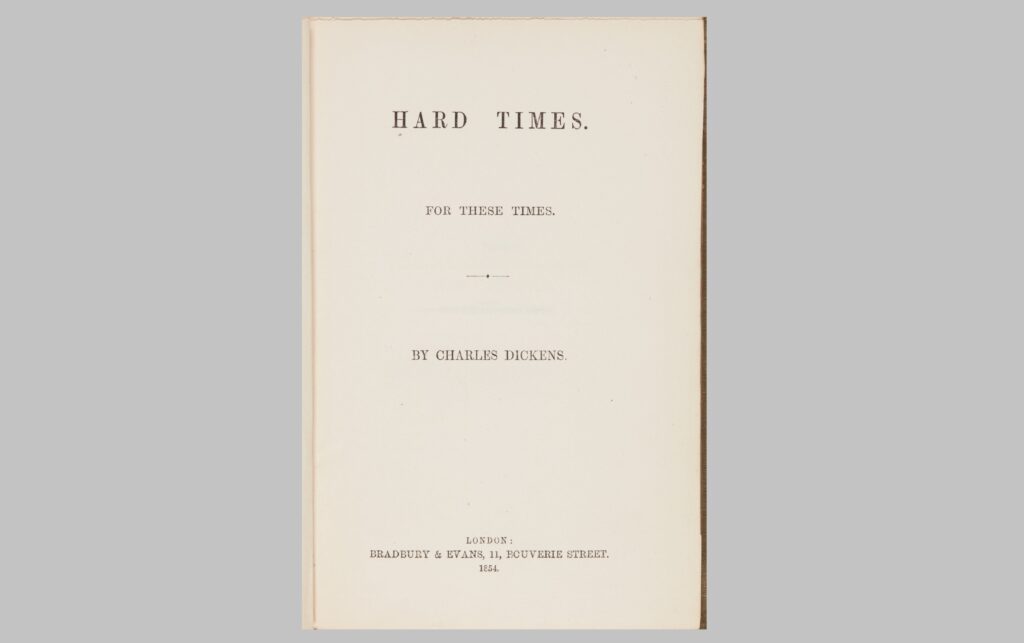
Set in the fictitious industrial town of Coketown, this novel offers a critique of utilitarianism and the Industrial Revolution’s dehumanizing effects. Thomas Gradgrind, a school board superintendent, champions a philosophy of pure fact and dismisses imagination. He raises his children, Louisa and Tom, according to these strict principles.
However, as they grow up, the shortcomings of this philosophy become evident in their troubled lives. The narrative also delves into the challenges faced by the working class, personified by characters like Stephen Blackpool.
11. Little Dorrit (1855-1857)
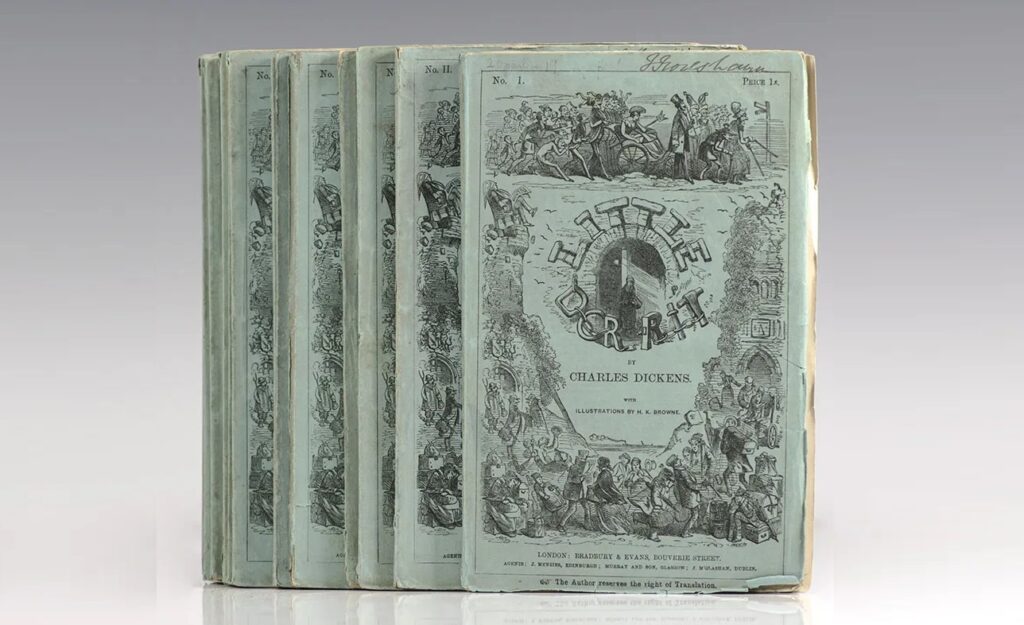
The narrative revolves around Amy Dorrit, affectionately known as Little Dorrit, and her family who, due to debts, have lived in London’s Marshalsea debtors’ prison for years. As she cares for her father, the “Father of the Marshalsea,” her life intersects with Arthur Clennam, who returns from overseas to investigate a family mystery.
Quick Fact: The novel sharply criticizes governmental bureaucracy (particularly through the portrayal of the fictional Circumlocution Office) and society’s treatment of the poor. It’s a tale of wealth and poverty, love and rejection, as well as hope amidst despair.
12. A Tale of Two Cities (1859)
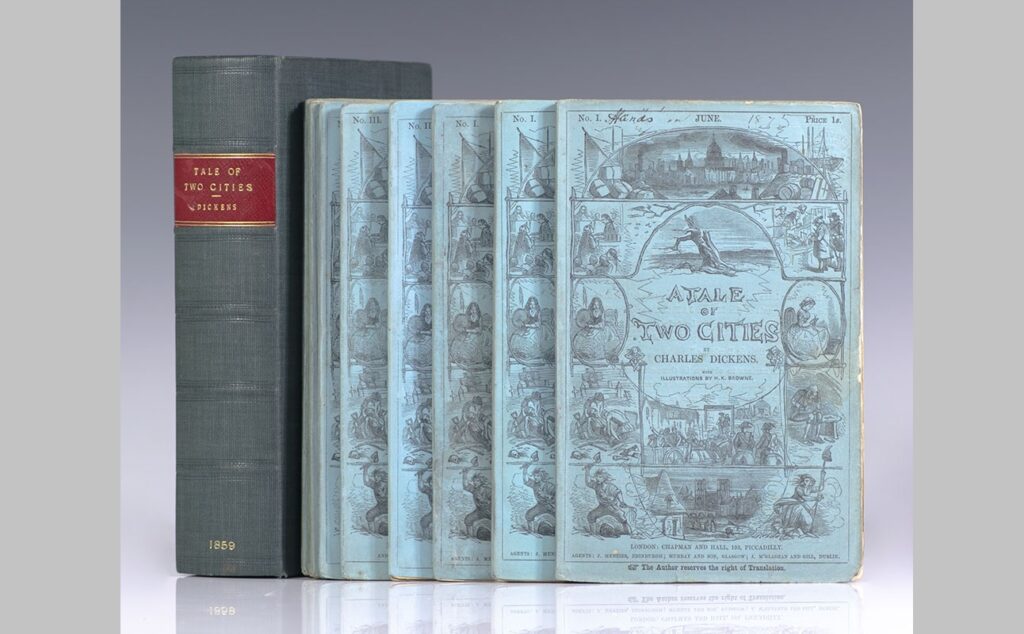
One of Dickens’s most well-known works, this novel is set against the backdrop of the tumultuous times leading to the French Revolution. The narrative alternates between London and Paris, showcasing the contrasts and parallels between the two cities.
Dr. Alexandre Manette, having been wrongfully imprisoned for 18 years, is released and reunited with his daughter Lucie in London. They form bonds with Charles Darnay, an exiled French aristocrat, and Sydney Carton, a dissolute English lawyer. The two men love Lucie, leading to a tale of sacrifice, resurrection, and the struggle for justice in a time of chaos.
13. Great Expectations (1860-1861)
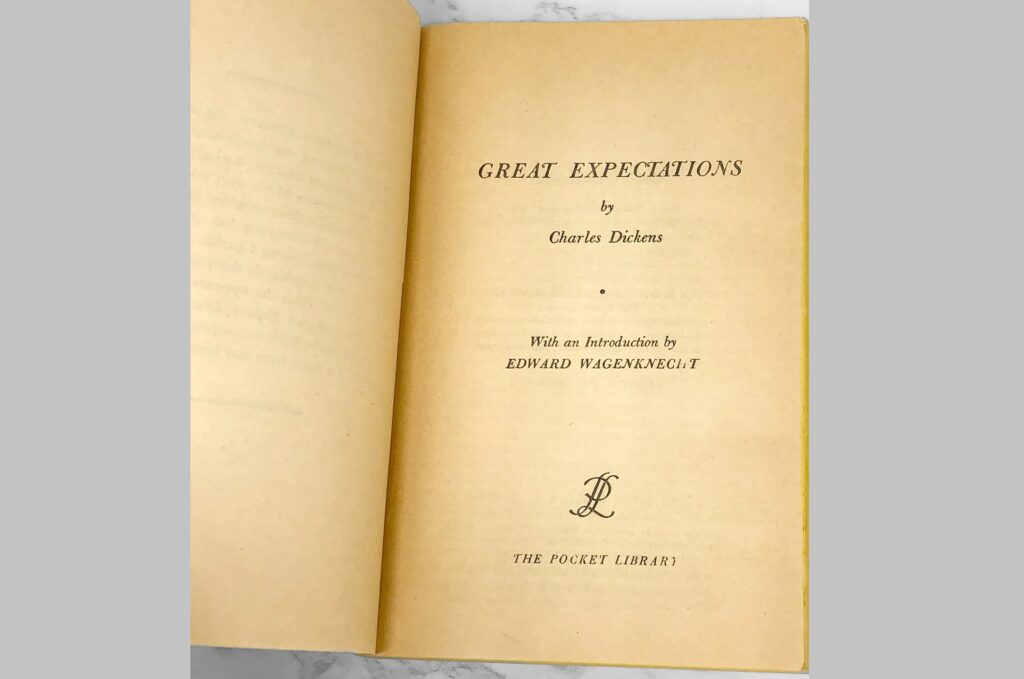
This coming-of-age story follows the life of an orphan named Pip. As a boy, he helps an escaped convict named Magwitch. Later, he is provided with “great expectations” from an anonymous benefactor, leading him to believe it might be the eccentric Miss Havisham or her adopted daughter Estella, with whom he falls in love.
Pip’s journey from a humble background to a gentleman and back again offers a critical look at the English class system and the realization that true value doesn’t necessarily come from wealth or status.
14. Our Mutual Friend (1864-1865)
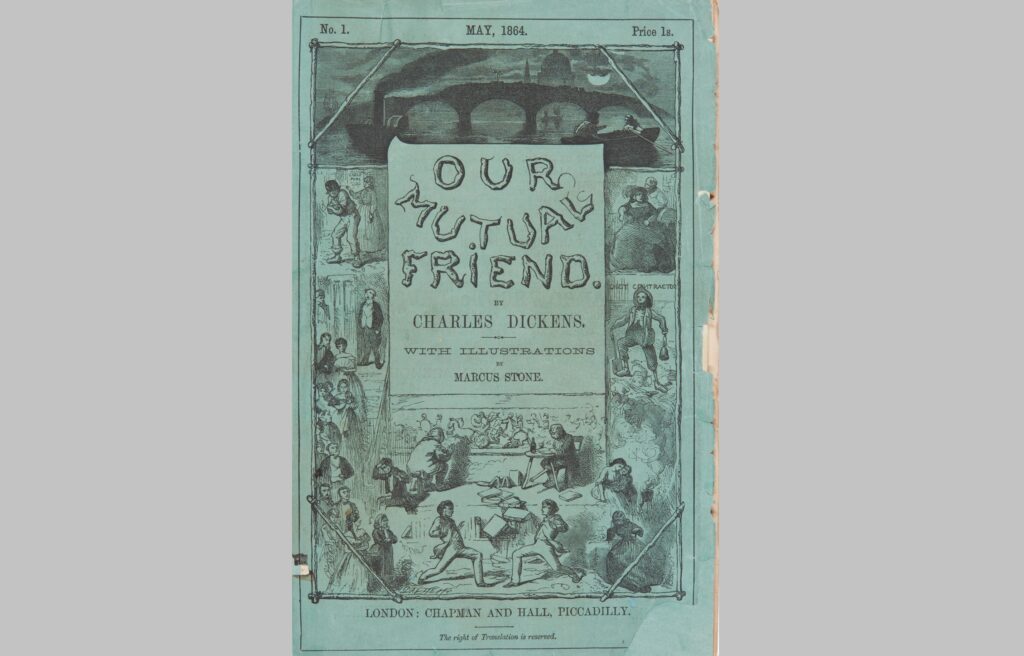
The narrative opens with a body being found in the Thames River, setting in motion a story of inheritance, greed, social pretensions, and love. John Harmon is set to inherit his father’s fortune under one condition: that he marries Bella Wilfer, a woman he’s never met.
When it’s believed that Harmon is murdered (the body found in the Thames), the inheritance goes to the Boffins. What follows is a complex web of characters and plots, highlighting the corrupting influence of money and the societal obsession with class and materialism.
15. The Mystery of Edwin Drood (1870)
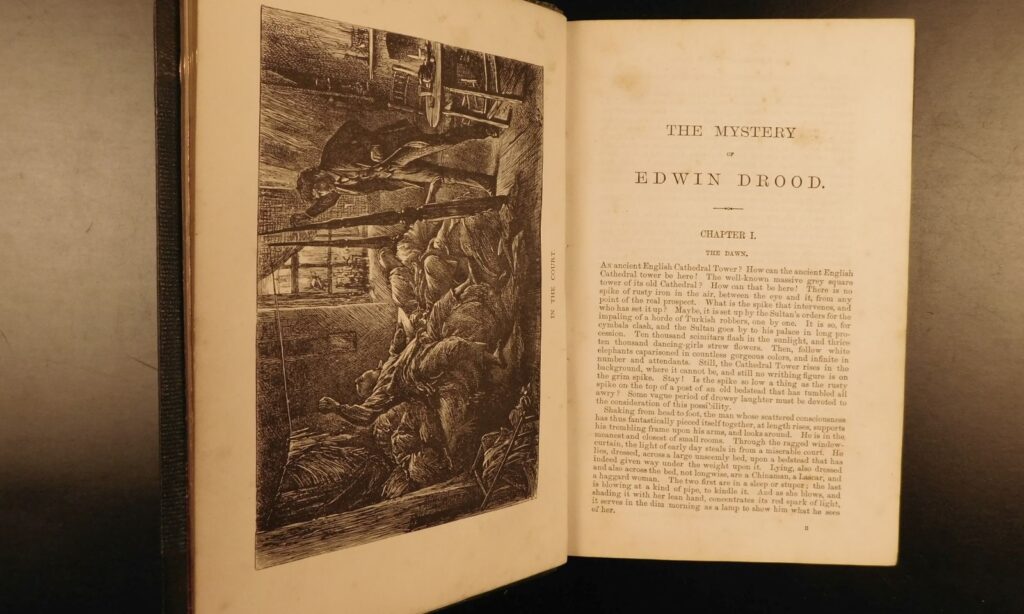
Dickens’s final novel, left unfinished due to his death, is a mystery story. Edwin Drood disappears under suspicious circumstances, leading to speculation and accusations about his whereabouts or possible murder. Key figures include Drood’s uncle, John Jasper, who secretly loves Rosa Bud, Drood’s fiancee.
The novel offers a critique of the opium trade (with Jasper being an opium addict) and touches on themes of love, betrayal, and disguise. Due to its unfinished state, the resolution to the mystery remains the subject of much speculation and debate.
In these novels, Dickens continued to hone his craft, delving into complex themes of identity, societal structures, love, and morality. His incisive critique of society, combined with his masterful storytelling and unforgettable characters, ensures his enduring popularity and relevance.
How does Dickens portray the themes of wealth and poverty in Little Dorrit?
In Little Dorrit, Dickens meticulously examines the stark contrasts between wealth and poverty. Amy Dorrit, the titular character, is born in and grows up within the confines of the Marshalsea debtors’ prison, a setting that’s symbolic of societal entrapment. Her devoted service to her imprisoned father is a sharp portrayal of the human face of poverty.
On the flip side, the affluent characters in the novel, particularly those associated with the Circumlocution Office, represent the complacency and inefficiency of the bureaucratic elite.
Dickens uses the Dorrit family’s sudden inheritance of wealth to explore how money can change one’s perspective and values, and ultimately, to underscore the idea that true richness comes not from material wealth, but from genuine human connection and moral integrity.
Why is A Tale of Two Cities considered a departure from Dickens’s usual style?
A Tale of Two Cities is distinct in the Dickens canon primarily because of its historical setting the French Revolution. While Dickens often infuses historical elements into his works, this novel is deeply rooted in a non-Victorian historical period, providing a vivid portrayal of the turbulence and chaos of revolutionary France.
Additionally, while many of Dickens’s novels are rich with humor and colorful characters, this particular work has a more somber and tragic tone, dealing with themes of resurrection, sacrifice, and the darker aspects of human nature, as seen in the contrasting cities of London and Paris.
In what ways does Great Expectations explore the concept of personal development and self-awareness?
Great Expectations is, at its heart, a bildungsroman, charting Pip’s journey from childhood to adulthood. His evolution from a humble blacksmith’s apprentice to a London gentleman, and his subsequent fall from grace, mirrors the universal human quest for identity and purpose. Throughout the novel, Pip grapples with issues of class, ambition, and the nature of true worth.
His infatuation with Estella and his aspiration to become a gentleman is driven by a misguided notion of self-worth. However, as the truths about his benefactor and his own desires unravel, Pip’s realization and eventual acceptance of his roots and values signify his true growth as a character.
Expert Tip: This exploration delves deep into the idea that self-awareness doesn’t stem from societal validation but from introspection and genuine understanding.
How does the theme of corruption permeate through Our Mutual Friend?
Our Mutual Friend is rife with critiques of Victorian society, and one of its central themes is the corrupting influence of money. The Boffins, who inherit Old Harmon’s wealth, are soon exposed to the greed and deceit of those around them.
Characters like Silas Wegg and Bradley Headstone exemplify the lengths to which individuals will go when driven by avarice or obsession. Additionally, the very setting of the novel, with the murky Thames River and the dust heaps, symbolically represents the dirt and decay of society.
Through various characters and their entangled relationships, Dickens portrays how wealth, or the pursuit thereof, can distort one’s moral compass and lead to ethical decay.
What themes prevalent in Dickens’s works are highlighted in the unfinished The Mystery of Edwin Drood?
Even though The Mystery of Edwin Drood remains unfinished, Dickens’s prevailing themes of love, betrayal, and human vice are evident. John Jasper’s secret obsession with Rosa Bud and his evident jealousy towards Edwin Drood spotlight the dark recesses of human emotions.
The opium dens, which play a significant role in the narrative, are reflective of the societal issues Dickens often touched upon. These dens not only introduce the element of drug addiction but also represent an escape from reality, hinting at the underlying societal pressures and discontent.
How does Dickens’s critique of society evolve over the course of these novels?
As Dickens matured as a writer and observer of Victorian society, his critique became more nuanced and encompassing. In his earlier works, like Little Dorrit, the focus is more on stark societal structures, particularly the divide between wealth and poverty.
However, as he moved to novels like Great Expectations, his examination shifted to more introspective themes, such as personal identity and societal expectations. By the time he penned Our Mutual Friend, Dickens’s commentary on society was deeply layered, examining not just class structures but also the inherent vices and virtues of individuals within that society.
How does Dickens’s use of secondary characters enhance the depth and message of his main narratives?
One of Dickens’s strengths as a novelist is his ability to craft rich, multi-dimensional secondary characters that not only support but also amplify the main narrative’s themes.
For instance, in Great Expectations, while Pip’s journey is central, characters like Joe Gargery, with his unwavering loyalty, and Miss Havisham, with her tragic obsession, offer contrasting perspectives on love, loyalty, and societal values. In A Tale of Two Cities, Madame Defarge’s vengeful fervor serves as a stark counterpoint to Lucie Manette’s gentle compassion.
These secondary characters, with their distinct voices and trajectories, provide a fuller, more holistic view of the world Dickens aims to depict, enriching the main narrative and offering readers multiple lenses through which to interpret the story.
How does Dickens address the repercussions of industrialization in Hard Times?
In Hard Times, Dickens paints a bleak picture of the fictitious industrial town of Coketown, using it as a backdrop to critique the dehumanizing effects of the Industrial Revolution. The character of Thomas Gradgrind embodies the cold, factual, utilitarian approach, valuing data over sentiment.
This mechanical view extends to his treatment of his own children, where emotions and imaginations are stifled. Additionally, characters like Stephen Blackpool represent the plight of the working class, who are reduced to mere cogs in the industrial machine, facing exploitation and devoid of any personal agency.
Through these narratives, Dickens laments the loss of individuality, compassion, and the essential human spirit amidst rapid industrialization.
What elements of suspense are embedded within The Mystery of Edwin Drood?
Dickens masterfully employs suspense throughout The Mystery of Edwin Drood. The novel’s central premise, the disappearance of Edwin Drood, is shrouded in mystery with multiple layers of uncertainty. John Jasper’s obsession with Rosa Bud and his opium-induced visions add a sense of foreboding.
The enigmatic characters, like the Landless twins, further complicate the narrative, making readers question their roles in the overarching plot. The very fact that the novel was left unfinished only amplifies its suspense, leaving readers to endlessly speculate on the intended conclusion.
How do familial relationships play a pivotal role in Dombey and Son?
Dombey and Son are centered on the complex dynamics of family relationships. Mr. Dombey’s obsessive desire for a male heir to continue his legacy leads him to neglect his daughter, Florence. His relationship with his son, Paul, is based on pride and business aspirations rather than genuine affection.
Florence’s consistent efforts to earn her father’s love and the eventual reconciliation highlight the idea that true family ties are built on love, understanding, and acceptance, rather than societal expectations or business interests.
In which novel does Dickens most heavily lean into his own personal experiences and why?
David Copperfield is often considered Dickens’s most autobiographical work. The trajectory of David’s life, from a challenging childhood marked by hardship to his quest for identity and happiness in adulthood, mirrors many of Dickens’s own experiences.
Dickens’s time working in a factory as a child, his strained relationship with his parents, and his pursuit of a literary career are all echoed in David’s journey. The novel serves as a reflection of Dickens’s own struggles, dreams, and the individuals who influenced his life.
What underlying societal issues does Dickens allude to in the subplot of the Circumlocution Office in Little Dorrit?
The Circumlocution Office in Little Dorrit symbolizes the bureaucratic inefficiencies and red tape prevalent in Victorian England. Dickens uses it to mock the government’s inability to get anything done, portraying it as a place where everything goes in circles with no resolution.
This satire underscores the frustration many felt with the sluggishness and ineffectiveness of the administrative machinery, which often hindered progress and innovation.
How does Dickens utilize contrasting settings, like London and Paris, to enhance the narrative depth in A Tale of Two Cities?
The alternating settings of London and Paris in A Tale of Two Cities serve as more than mere backdrops; they embody the contrasting themes of the novel. While London stands relatively stable and secure, Paris is in the throes of revolutionary fervor. This juxtaposition accentuates the differences in societal stability, law, and justice between the two cities.
Dickens uses these contrasts to showcase characters like Charles Darnay and Sydney Carton, who navigate these polar worlds, thus deepening the narrative’s exploration of duality, sacrifice, and redemption.
Which novel showcases Dickens’s most elaborate critique of the legal system and how?
Bleak House stands out as Dickens’s most incisive critique of the English legal system. Through the interminable case of Jarndyce vs. Jarndyce, Dickens highlights the convoluted, self-serving, and often ineffective nature of the Court of Chancery.
The case, which drags on for generations, consuming the lives and resources of those involved, serves as a metaphor for a broken system that prioritizes procedure over justice. The novel not only exposes the absurdities of the legal process but also emphasizes the human cost of such inefficiencies.
Conclusion
Across his vast array of novels, Charles Dickens showcased an unparalleled ability to weave intricate narratives, create memorable characters, and address pressing societal issues of his time. His works are a testament to his keen observations of Victorian society, his empathetic understanding of human nature, and his narrative prowess.
From exposing the injustices of bureaucratic labyrinths to exploring the depths of personal introspection, Dickens’s novels remain timeless, continually inviting readers to reflect on the complexities of society and the human heart.
